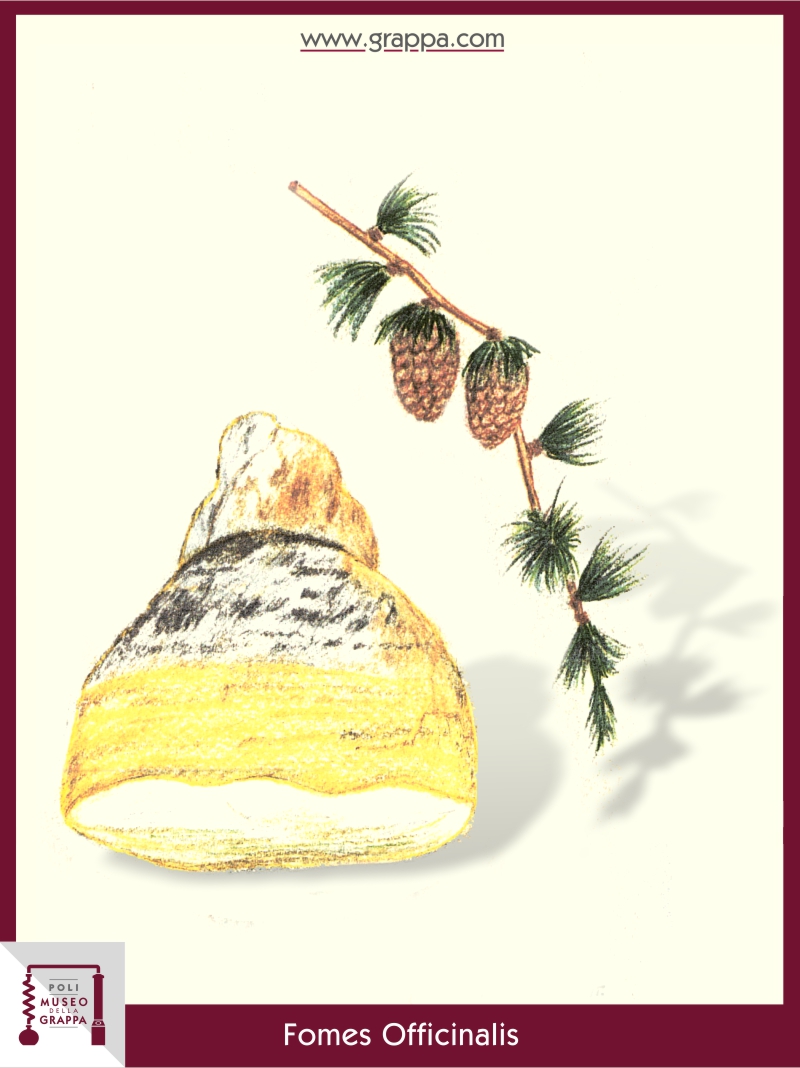The agarikon
- Plant: Agarikon, Quinine Conk (Fomes Officinalis)
- Plant part: mushroom
- Plant feauters: diuretic, antispasmodic, purgative, emetic

-
Description:
Walking in the mountains at high altitudes it happens often to see conifers, that were strucked by lightning.
If one of these sick or even dead trees is a larch, it's possible that on its trunk grows a tough and tenacious protuberance which vaguely resembles a hoof.
In reality, it is a mushroom consisting of tubers that are renewed every year. These are arranged vertically in several layers in order to allow the spores to fall off. Its scientific name is Fomes officinalis, commonly also known as agarikon.Agaricus Medicorum was in antiquity already definded to indicate its therapeutic virtues notes: „it's suitable for all complaints of the gastrointestinal tract", said Dioscorides and „helps against snake bites" affirmed Plinius, while the common Herbarium of Venice of 1522 recommended it against pains of the pelvis and the „matrix".
In reality these therapeutic uses were not only the result of a blossoming imagination. Already at the beginning of this century, when the agaricico acid was discovered, the antifungal properties of the fungus were confirmed, which are comparable to those of atropine.
However, the therapeutic use of agarikon was not very widespread, due to its rarity and the relatively high cost, but was rather applied in various liqueurs. The bitter taste is attributed to the very energetic effects of this fungus.
The bitterness of the agarikon has actually always been known; "Initio gustus dulcis," said also Pliny, "mox in amaretudem lransit".And this is the experience you make while enjoying a Grappa of Fomes officinalis: an initially sweet flavor that turns almost immediately into a sour and energetic bitterness.
Few pieces of flesh are sufficient to impart to the Grappa a strong bitter taste; a spongy and stringy pulp, that crumbles as flour, will vaguely recall the smell oft he fungus.
The recipe
-
Ingredients:
- a few pieces of pulp of Fomes officinalis Vitt.
- 1 liter of Grappa -
Preparation:
The same smell you can find again in the Grappa after the fungus was left to macerate for at least 4 months in the distillate.
Further 4 months of aging after an appropriate filtration, will improve both the taste and the color,
which is initially very pale and then pearl gray to yellowish.
Poli Distillerie and
Poli Grappa Museum
Newsletter
Subscribe our newsletter to keep up to date with our latest news.